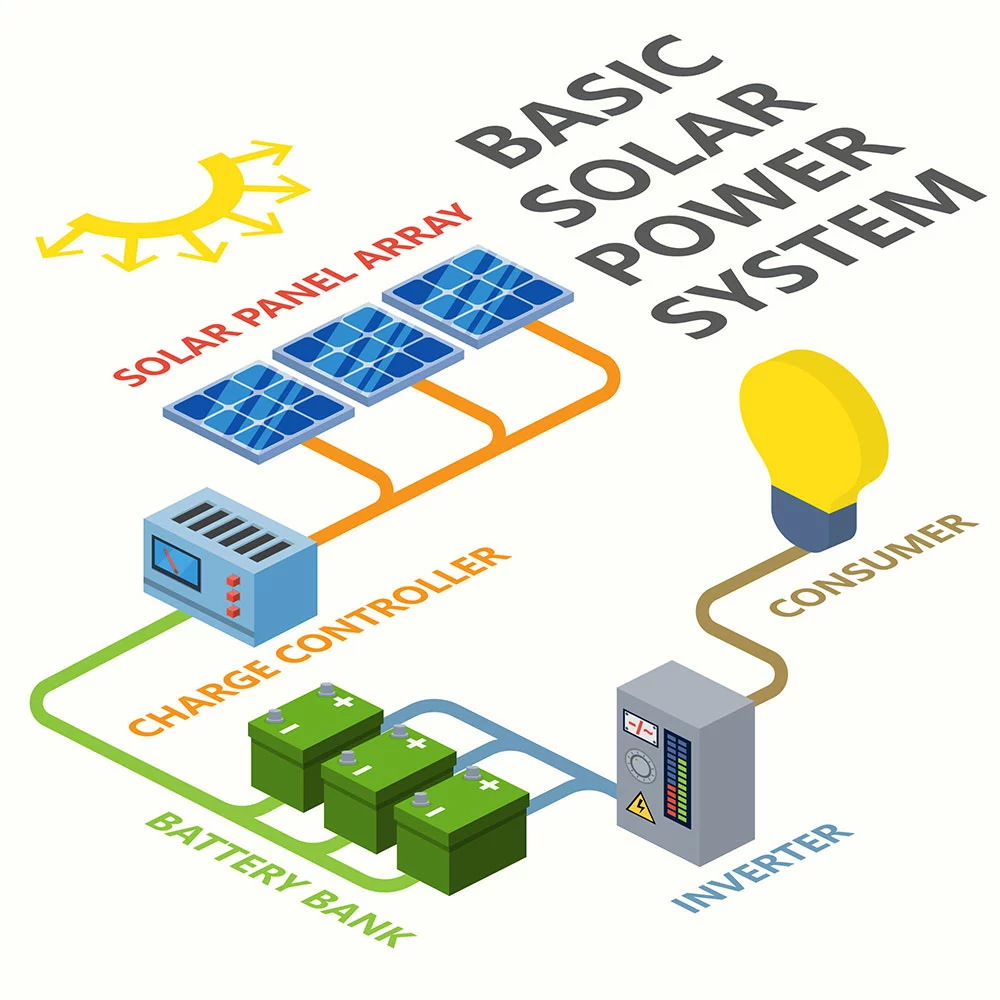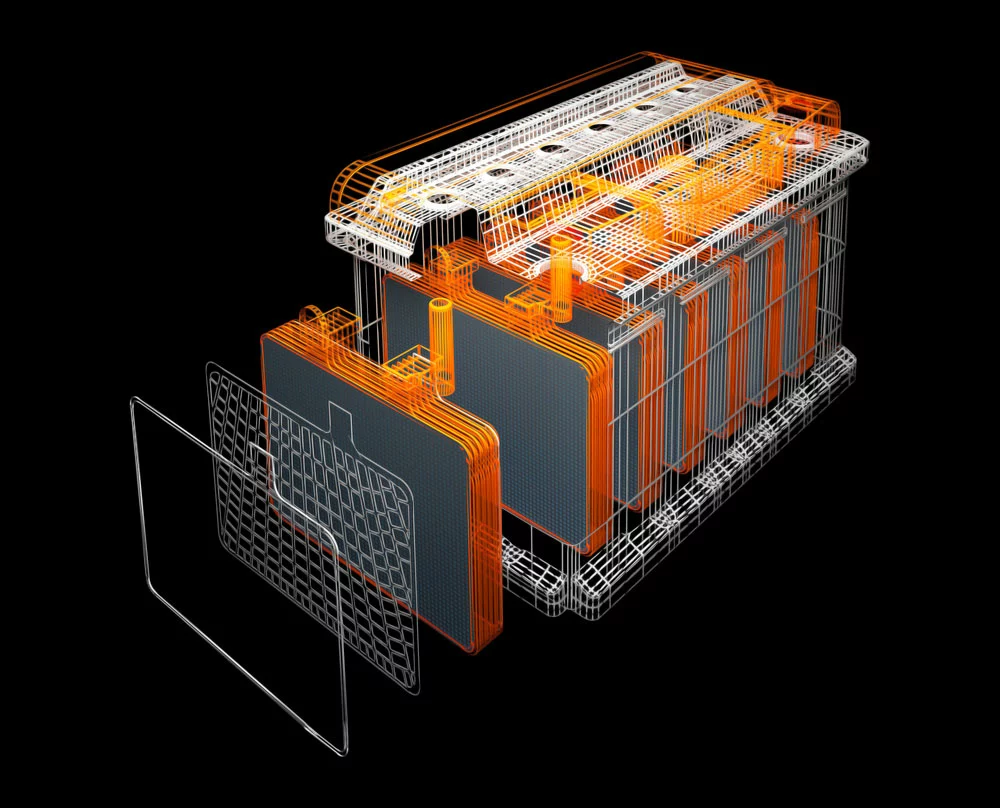If you’re considering adding solar panels to your home, then you’ll need to choose the right type of battery to store energy generated by the panels. Deep cycle batteries for solar are a popular choice, but what exactly are they, and how do they work?
In this article, we’ll go through the different types of these batteries, their uses, and maintenance tips and considerations to keep in mind.
What are Deep-cycle Batteries?
Deep cycle batteries are a type of lead battery explicitly designed to provide a sustained power supply over a long period. Unlike standard batteries, which generally only provide a short burst of energy before they run out, deep-cycle batteries can reliably run until they are 80% discharged. It is also better to only partially discharge a deep cycle battery below 45%, as doing so may result in a shorter lifespan.
These batteries tend to exist in applications where sustained power is necessary, such as RV camping, marine vehicles, and renewable energy systems. You can also find them in golf carts, forklifts, and electric wheelchairs.

RV Camping
The Various Types of Deep Cycle Batteries
- Gel batteries
2. AGM batteries
3. Flooded lead acid batteries

Production of Lithium batteries
Uses for Deep Cycle Solar Batteries
Deep cycle batteries take part in renewable energy systems, such as solar power, to store and provide electricity when the sun isn’t shining. You can also use them in off-grid applications where grid power is unavailable or as a backup power supply during a power outage. However, each deep cycle type may have different benefits and drawbacks for solar power use.
Gel batteries
There are many uses for gel batteries, as they are resistant to shocks and very safe for various applications. One popular use for them is powering motorcycles and trolling motorboats. However, they are also well-suited for solar power systems due to their low self-discharge rate and high cycle life.
AGM batteries
AGM batteries are an excellent option for several different purposes. They are spill-proof and vibration-resistant, making them ideal for automotive applications like golf carts, electric vehicles, and wheelchairs. In addition, you can use them in a wide range of other settings, such as backup batteries for uninterruptible power supplies (UPS) or standby batteries for home alarms and security systems.
Flooded lead acid batteries
They are one of the most widely used batteries, primarily for stationary applications. Their main advantage is that they are easy to wire into battery banks, making them a popular choice for large-scale power systems. However, these batteries require regular maintenance to stay operating at peak efficiency.
Lithium-ion batteries
Lithium batteries have become increasingly popular due to their high energy density and long lifespan. You’re most likely to find them in consumer electronics, such as laptops and cell phones, but they are also widely used in electric vehicles and renewable energy systems. However, they do come at a higher cost compared to other varieties of deep-cycle batteries.

Electric car lithium battery pack
The Charging Process of a Deep-cycle Battery
One of the essential tools when charging a deep-cycle battery is a charge controller. The charge controller monitors the charge level and regulates the amount of electricity flowing into the battery, helping to prevent too much power from entering and potentially damaging the battery or causing it to explode.
There are two types of charge controllers – PWM Controllers and MPPT Controllers. While PWM Controllers use simple pulse width modulation (PWM) charging technology, MPPT controllers use more advanced technology to find the maximum operating point for the solar panels and efficiently transfer that power into the battery.

MPPT charge controller
How Many Watts from a Solar Panel System to Charge a Deep Cycle Battery?
The amount of watts to charge a deep cycle battery depends on several factors, including the type of battery you are using, the size and quality of your solar panel, and the amount of sun exposure your solar installation is receiving. Generally, you will need 300-watt solar panels to fully charge a 12V 100Ah battery in 5 hours of direct sun exposure. However, it’s important to note that this is just a rough estimate and may vary according to the factors above.

An illustration of the solar panel system
The Life Span of Deep-cycle Batteries
Deep cycle batteries are designed to provide a consistent power supply for various applications, from powering electric cars and RVs to running backup generators in an emergency. Depending on the deep-cycle battery you use, the lifespan can vary significantly.
For example, AGM batteries are typically known to last anywhere from 4 to 7 years. By contrast, gel batteries last from 2 to 5 years, while flooded lead acid batteries typically last from 4 to 8 years. Perhaps most impressively, high-quality lithium batteries can last about 10 years or more when properly taken care of.
How to Tell If There is Something Wrong with a Deep Cycle?
Several telltale signs can give you a clue to determine whether your deep-cycle battery is in bad condition or not. The most obvious sign is if the battery fails to preserve a charge, either losing it quickly or refusing to hold a charge. Additionally, sluggish performance can indicate a damaged battery and shorter run times, which means less time running your boat motor, RV generator, or other equipment.
Other possible evidence includes a damaged terminal, bulge or bump in the case, crack or rupture of the plastic casing surrounding the battery, excessive leaking caused by corroded terminals and cells, or discoloration caused by chemical damage over time. By being aware of these signs and addressing them promptly, you can prolong the life of your deep-cycle battery.
The Maintenance of Deep Cycle Batteries
To keep your deep cycle batteries running at their best, it is essential to maintain them properly. It starts with using the proper battery charger, ensuring that your connections are secure, and keeping your terminals clean and free of dirt and corrosion.
Additionally, it is crucial never to discharge your batteries below 80% since discharging too deeply can shorten their overall lifespan. Overall, proper maintenance of your deep cycle battery will not only ensure maximum performance but will also help prolong its lifespan for years to come.

Batteries overview
Best Deep-cycle Batteries for Solar
Deep cycle batteries for solar: Trojan FLA Battery
The trojan battery is the leading brand for flooded lead acid deep cycle batteries. These batteries are popular among those who need a dependable power source for solar energy systems, as they offer consistent and reliable power for years to come.
Deep cycle batteries for solar: Concorde Sun Xtender
This line of deep-cycle batteries from Concorde is second to none in the industry. Although they may be bulkier, these batteries offer excellent power storage and long-lasting performance. You can easily install them in RVs for solar storage too.
Deep cycle batteries for solar: Mighty Max
This type of deep-cycle battery may not be the first choice for residential applications. Still, it can be an excellent option for smaller solar energy systems where quick recharge is unnecessary.

Solar battery
FAQs
Can deep-cycle batteries be used with solar systems?
Deep-cycle batteries can be used as solar batteries for off-grid or backup power systems. They are often the better option for these solar applications because they have a lower self-discharge rate and can handle deeper discharge cycles without damage.
What is the difference between a deep cycle and a traditional battery?
A regular battery is designed for short bursts of energy to start vehicles or equipment. On the other hand, deep-cycle batteries are for sustained use and can handle being discharged more deeply without damage.
Can I connect different batteries?
No, connecting different types or brands of batteries can be dangerous and may damage the batteries or equipment. You use batteries designed to work together as a set with the characteristics.
Conclusion
As you can see, there are many things to consider regarding solar panels and deep-cycle batteries. But by understanding the basics, you can decide what will work best for your needs.
We hope this article has provided some helpful information and insight into the world of deep-cycle batteries. And if you have any additional questions, don’t hesitate to contact us.
